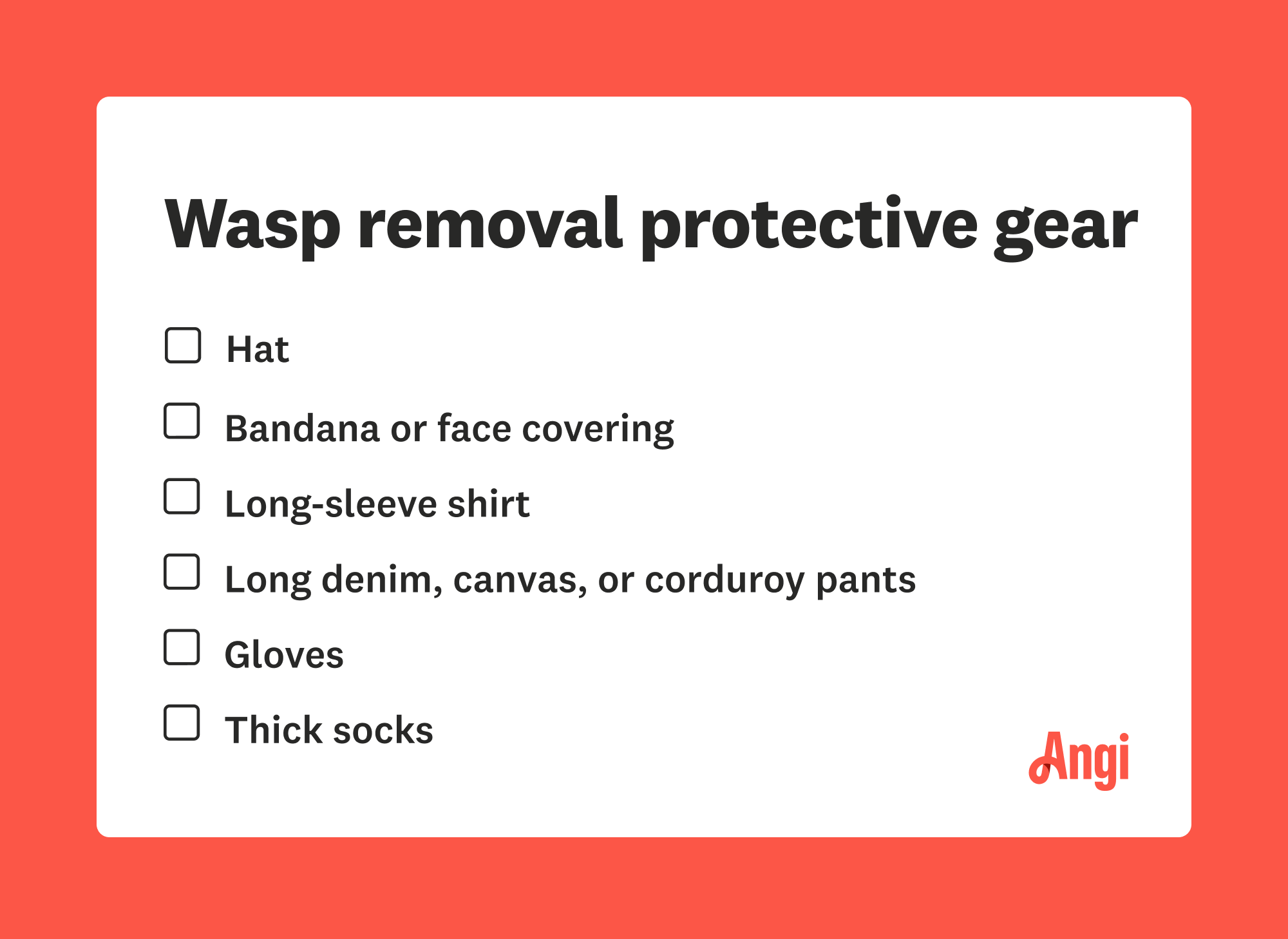Highlights
Don’t swat at wasps, or you could get swarmed.
Always wear protective full-coverage clothing.
Use traps and decoys to control the wasps around your home.
A licensed pro is the best and safest way to deal with wasps.
Prevent future wasp invasions by ridding your yard of food and sweet smells.
How did we go from the cute, fuzzy bumblebee to its infinitely uglier and more aggressive relative, the wasp? Wasps aren’t just annoying invaders of your backyard barbecue—they’re also way more likely to sting you on a whim (a potentially deadly whim, for those who are allergic). Luckily, you don’t have to let these rude squatters terrorize you if they’ve made a home near your home. Here’s how to give them the boot. It’s worth noting straight off the bat that dealing with wasps is extremely dangerous and should be handled with caution. Calling in a pro is always your best bet here, but we’ve outlined some tips you can follow for small issues if you have the proper experience.
Don’t Swat at Those Predatory Insects
Regardless of your obvious size advantage, the wasp isn’t phased by your futile swats. This will only anger them—and any of their nearby buddies. Once you get slap-happy in an effort to scare them off, the wasp will release a pheromone that triggers others in the vicinity to intervene. If there’s a nest nearby, well, let’s not think about that.
Prepare for Direct Intervention

If you’re looking to try and get rid of wasps yourself, don’t go in unprepared. Before attempting DIY wasp removal, wear a hat and a bandana or other protective face covering. A wasp stinger can pierce straight through thin fabrics such as cotton, so don multiple layers of thick and tightly woven fabrics (think denim, canvas, or corduroy). Pair these with long sleeves and pants, as well as thick socks and gloves. Don’t forget to tuck your pants into your socks and your sleeves into your gloves.
Spray With Insecticides

Commercial wasp sprays are the most effective DIY way to kill these insects. However, according to the U.S. Environmental Protection Agency, the best time for any DIY intervention is spring or early summer. Once it’s later in the season, the colony will have grown to its strongest (and most defensive) stage. For large, busy nests, it’s best to leave extermination to a local wasp control pro.
If you decide to go the spray route, wait until the evening when the wasps aren’t as active. Don the proper protective gear and coat as much of the nest as you can. Never stand underneath the nest, as the spray can get in your eyes, and you may get hit by falling wasps. Then, wait a few days, and once you’re sure the wasps are all dead, dispose of the nest in a sealed trash bag.
Mimic Your Average Wasp Nest With Decoys
If you have certain areas of your home that wasps love to inhabit—such as gaps, overhangs, and wooden shingles—consider adding decoy nests to deter the real ones. The social wasp isn’t nearly as social when there’s another nest involved. Just like you, wasps don’t want to have wasps for neighbors, so they’ll steer clear if they think the space is already occupied.
Set Up Wasp Traps
Seeing too many wasps flying around? Wasp traps can help control the population before building a nest. You can find commercial traps at your local hardware store, or you can make your own with a two-liter bottle. Simply cut the top of the bottle off, flip it upside-down, insert it into the bottom portion, and tape it off with duct tape. Fill the trap with a sweet liquid (soda works perfectly).
Consider Bringing in a Pro

Even for the bravest and boldest DIY-er, removing a wasp nest is extremely hazardous. One angry wasp can sting many times, so even just a few of them will leave you vulnerable to dozens of wasp stings. Professional wasp removal costs an average of $375, and it’s highly worth it if it’s within your budget—not just for the risk-free removal, but for the peace of mind that the wasps are gone for good.
Preventing Wasps and Other Common Pest Infestations
Once you’ve dealt with a nest, you’re going to be extra keen on never letting a wasp infestation happen again. You can keep wasps away from your home with a few precautionary measures:
Avoid having food around your yard (pack those barbecue leftovers up ASAP).
Cover outside trash cans.
Consider removing nectar and bird feeders if they’re attracting wasps.
Avoid wearing sweet-smelling lotions or perfumes outdoors.
Take care of necessary home repairs, such as broken siding and soffit gaps.
Seal off any gaps or crevices.
Check your yard for rodent burrows and any other holes that could potentially become a spot for wasp and hornet nests.





